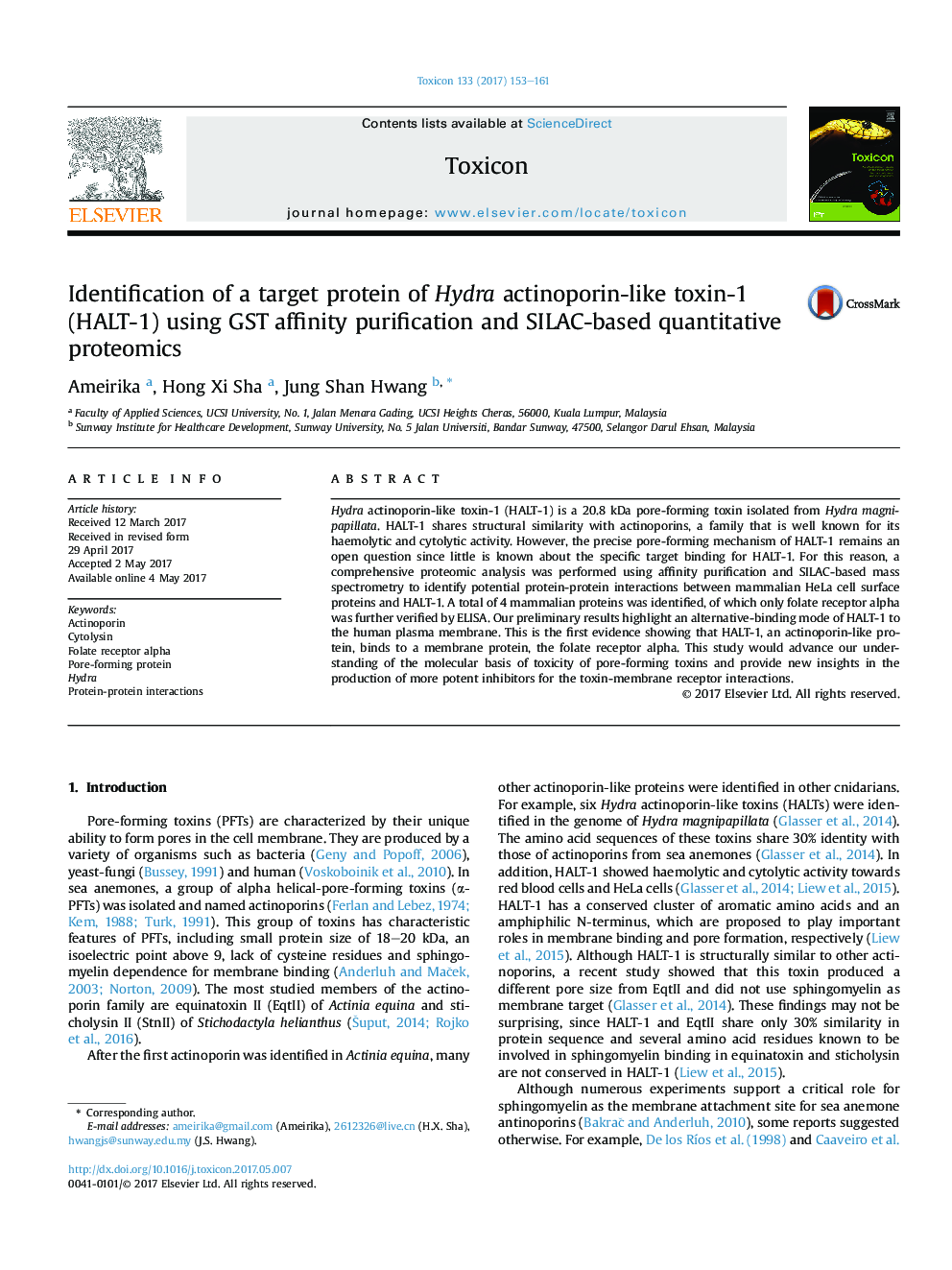| کد مقاله | کد نشریه | سال انتشار | مقاله انگلیسی | نسخه تمام متن |
|---|---|---|---|---|
| 5519365 | 1544103 | 2017 | 9 صفحه PDF | دانلود رایگان |

- Affinity of Hydra HALT-1 to sphingomyelin is very low and an alternative binding site may be involved.
- SILAC-based mass spectrometry was used to identify HALT-1 targeting membrane protein.
- Folate receptor alpha, a GPI-anchor protein interacts with HALT-1 in GST pull down assay.
- Direct binding of HALT-1 and folate receptor alpha was evaluated using ELISA.
Hydra actinoporin-like toxin-1 (HALT-1) is a 20.8Â kDa pore-forming toxin isolated from Hydra magnipapillata. HALT-1 shares structural similarity with actinoporins, a family that is well known for its haemolytic and cytolytic activity. However, the precise pore-forming mechanism of HALT-1 remains an open question since little is known about the specific target binding for HALT-1. For this reason, a comprehensive proteomic analysis was performed using affinity purification and SILAC-based mass spectrometry to identify potential protein-protein interactions between mammalian HeLa cell surface proteins and HALT-1. A total of 4 mammalian proteins was identified, of which only folate receptor alpha was further verified by ELISA. Our preliminary results highlight an alternative-binding mode of HALT-1 to the human plasma membrane. This is the first evidence showing that HALT-1, an actinoporin-like protein, binds to a membrane protein, the folate receptor alpha. This study would advance our understanding of the molecular basis of toxicity of pore-forming toxins and provide new insights in the production of more potent inhibitors for the toxin-membrane receptor interactions.
Journal: Toxicon - Volume 133, July 2017, Pages 153-161